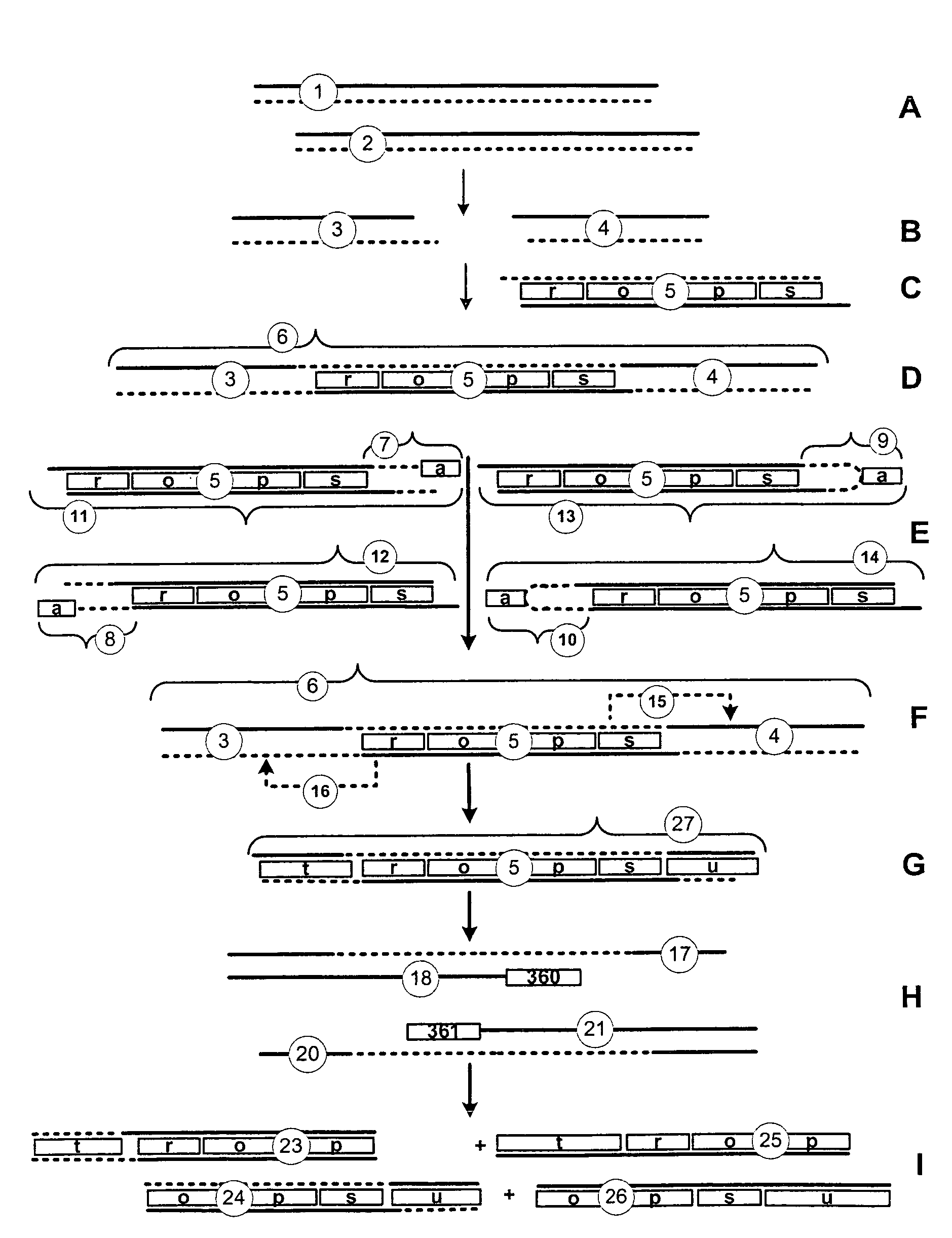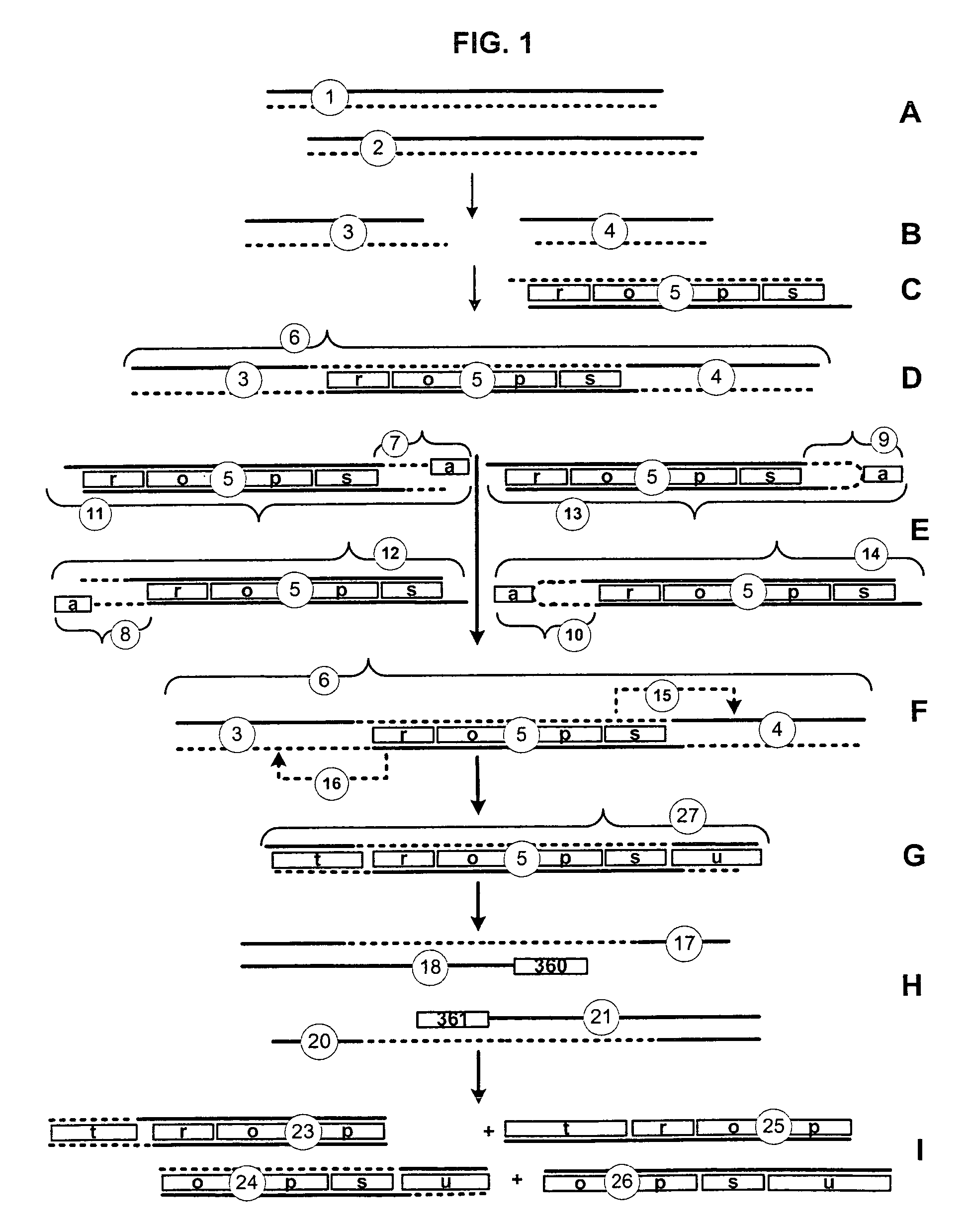Producing, cataloging and classifying sequence tags
a sequence tag and sequence technology, applied in the field of nucleic acid characterization and analysis, can solve the problems of time-consuming and material-intensive methods of analyzing mrna-expression patterns, complex cdna-probe differential hybridization, and the traditional approach to gene-expression analysis, blotting or plaque hybridization,
- Summary
- Abstract
- Description
- Claims
- Application Information
AI Technical Summary
Benefits of technology
Problems solved by technology
Method used
Image
Examples
Embodiment Construction
Definitions
[0047]Nucleic Acid: A nucleic acid is a biological molecule composed of a chain of covalently linked nucleotides. A single-stranded nucleic acid is an unpaired nucleic acid strand. A double-stranded nucleic acid comprises two single-stranded nucleic acids hydrogen-bonded together. The two strands of a double-stranded nucleic acid are complementary, i.e., capable of hydrogen bonding. Typically, A and T (or U in the case of RNA) and G and C nucleotides for base-pairs in a double-stranded nucleic acid. Sticky ends are single-stranded nucleic acid segments at one or both ends of a double-stranded nucleic acid segment. Double-stranded nucleic acid segments comprising compatible sticky ends are capable of concatenation by coupling. A partial duplex nucleic acid is a nucleic acid having a region of double-stranded nucleic acid and at least one region of single-stranded nucleic acid, typically at an end of the molecule. Typically, the single-stranded nucleic acid of a partial dup...
PUM
| Property | Measurement | Unit |
|---|---|---|
| diameter | aaaaa | aaaaa |
| diameter | aaaaa | aaaaa |
| hydrophilic | aaaaa | aaaaa |
Abstract
Description
Claims
Application Information
 Login to View More
Login to View More - R&D
- Intellectual Property
- Life Sciences
- Materials
- Tech Scout
- Unparalleled Data Quality
- Higher Quality Content
- 60% Fewer Hallucinations
Browse by: Latest US Patents, China's latest patents, Technical Efficacy Thesaurus, Application Domain, Technology Topic, Popular Technical Reports.
© 2025 PatSnap. All rights reserved.Legal|Privacy policy|Modern Slavery Act Transparency Statement|Sitemap|About US| Contact US: help@patsnap.com



